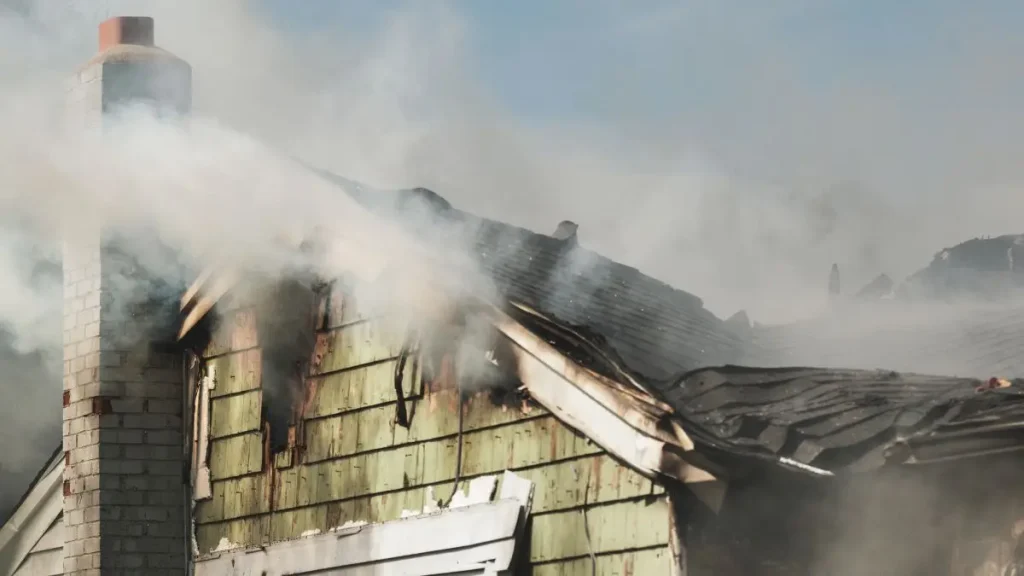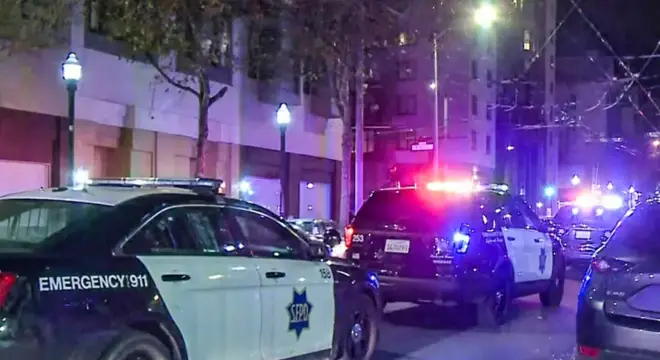Two Families Lose Homes in North Dakota Twin Home Fire
I read the Fargo Fire Department’s report and felt that sick, small-world pause — two families losing their homes in a single night, one person hurt, a dog rushed to a vet. I want to walk you through exactly what happened on Oct. 11 so you’re clear on the facts before we dig into prevention and recovery.
At about 10:02 p.m., crews were dispatched to a twin home at 5110 48th Avenue South after calls of heavy flames. Firefighters found the west-side unit fully involved, flames running from the ground floor up to the roof.
Strong winds that night pushed the blaze across to the neighboring unit — that’s how one house’s emergency became two households displaced. The department says the flames reached the second twin quickly because of that wind and the building layout.
Residents of both units were outside when crews arrived, which is one small mercy. Firefighters had the fire under control by 10:37 p.m. — about 35 minutes after the first call — but control doesn’t erase the damage.
The west unit suffered extensive fire damage; the east unit’s second floor was significantly damaged. A third nearby home took exterior heat damage. No cost estimate is available yet, and the cause remains under investigation.
One person was taken to the hospital with non-life-threatening injuries. Firefighters also found a dog inside; it was transported to a local veterinarian for evaluation — another reminder that pets are part of the family in these moments.
If you live in a twin home or a duplex, think about this for a second: do you know your escape plan and where you’d go if wind pushed a fire faster than you expected? I’ll show you what to check next.
Human Side of the Fire — Families, Pets, and Immediate Impact
When I saw the Fargo Fire Department’s official Facebook post, one thing stood out — the precision and care in their update. No drama, no panic — just clear words about two displaced households and one injured resident. That post carried the quiet weight of a long night.
Think about it: two families standing outside their burning homes, watching the place that held their memories collapse into smoke. I’ve spoken to survivors of similar fires before — the hardest part isn’t losing furniture or walls, it’s losing that sense of safety that a home gives you.
Firefighters on scene said everyone made it out before they arrived, which is probably why there wasn’t a tragedy beyond injury. But “safe” doesn’t mean untouched. Even when no lives are lost, displacement is its own kind of trauma.
And somewhere in that chaos, a dog was carried out — alive. The department’s Facebook update mentioned the animal was taken to a vet for evaluation. It’s a small piece of good news, but in nights like that, it’s everything.
If you’ve ever stood in cold air watching emergency lights flicker off your windows, you know that numb feeling. It’s the moment you realize your next bed, your next meal, might come from strangers’ kindness.
Inside the Fire Scene — Why Twin Homes Are So Vulnerable
Every time I read about a twin home fire, there’s a familiar pattern — one unit catches, and within minutes, the other follows. According to InForum’s coverage, flames from the west-side unit climbed fast from ground to roof, and the night’s strong winds carried them into the east unit before crews could fully contain the spread.
That single sentence — “Strong winds spread the flames to the second twin home unit,” — tells a lot about how fragile shared structures can be. Twin homes often share walls, attics, or insulation layers that don’t completely block heat transfer. When wind accelerates a blaze, embers find every small opening.
We saw a similar case earlier in Iowa, where firefighters battled an intense house fire in an Ames neighborhood — that story too showed how quickly wind can turn one home’s problem into a community crisis.
Most homeowners don’t think about that when they move in. They check for leaks, drafts, paint — not the materials between walls or the fire rating of separation panels. But when fire strikes, those invisible details decide whether your home survives or becomes part of the same fire zone.
In Fargo’s case, this wasn’t negligence; it was circumstance — timing, wind, structure. Still, it’s a wake-up call for anyone living in attached homes. A routine inspection, sealing attic gaps, or even reinforcing firewall insulation can make a difference.
And honestly, we shouldn’t just read these updates and move on. If you live in a twin or duplex-style home, ask your local fire department for a home-safety walkthrough. They often do it for free — it’s the kind of prevention that only becomes urgent after it’s too late.
Aftermath and Recovery — What Happens When a Home Fire Displaces You
When the fire trucks leave, reality hits hard. Two households in Fargo are now dealing with that long, exhausting process — figuring out what’s next.
Usually, the Red Cross or Salvation Army steps in within hours to arrange temporary housing, clothing, and emergency funds. For families with insurance, adjusters begin estimating losses, but it can take weeks before real help arrives. Smoke and water damage don’t wait; they keep spreading, quietly destroying what the flames didn’t.
If you’ve ever had to document fire damage, you know the strange pain of photographing every ruined room — not just for memory, but for paperwork. It’s draining, and it’s necessary.
Beyond property, there’s the emotional side. Kids worry about school, parents about bills, pets about routine. In most cities, including Fargo, community relief networks — churches, local donors, neighbors — often bridge that gap while agencies process claims.
It’s easy for outsiders to scroll past the headlines, but if you’re nearby, drop off essentials, donate gift cards, or share verified fundraisers. Fires end fast; recoveries don’t.
If you like staying updated on verified home safety incidents and quick recovery tips shared directly by fire safety experts and locals, there’s a growing WhatsApp channel that curates these updates responsibly — it’s been incredibly useful for homeowners staying alert to real cases like this.
Community Response — How Fargo Came Together After the Fire

I’ve covered enough local tragedies to know one thing: Fargo shows up. It’s that Midwest solidarity — neighbors who don’t wait for an official call before checking if you’re okay.
Within hours of the incident, local Facebook groups started circulating donation posts and offers for spare rooms. People in Fargo have this habit of quietly organizing — church groups, small businesses, even students — helping families they’ve never met.
And it’s not just charity. It’s identity. This city has faced blizzards, floods, and fires — and somehow, every time, the same resilience shows up. Firefighters, volunteers, local veterinarians — they all carry that same message: “You’re not alone tonight.”
If you live nearby, take that spirit forward. The best community safety system is still human connection. Knowing your neighbors might one day be what saves your home — or theirs.
In another recent incident, a Germantown family and their pet escaped a blaze with no injuries reported — a reminder that fast evacuation can save both lives and memories.
What This Means for North Dakota Homeowners — Fire Safety & Preparedness
I’ve said this before and I’ll say it again — prevention isn’t dramatic, but it’s the part that saves lives.
This Fargo fire is a reminder that wind and structure together can turn a small spark into a full loss. You don’t have to wait for a city inspection to stay safe. Check your smoke detectors today, especially if you haven’t tested them this year. Make sure you have at least one per level, and that every bedroom has an escape plan.
If you live in a twin or attached home, ask your builder or landlord if your unit’s firewall meets current North Dakota building codes. It’s a boring question — until the night it matters most.
Also, think about small upgrades:
- Fire-rated doors between garage and living areas
- Clear access paths to exits
- Annual electrical inspections
These steps don’t make headlines, but they prevent them.
I know, we all assume it won’t happen to us — until someone we know loses everything in thirty-five minutes. So, here’s my ask: tonight, walk through your home. Check your alarms, your exits, your fire extinguisher. You might never need them. But if you do, you’ll be glad you didn’t wait.
Bigger Picture — Home Fire Trends in North Dakota
When you zoom out from one burned twin home, you start seeing a pattern that’s easy to miss. North Dakota doesn’t make national headlines for wildfires or urban infernos, but structure fires here happen more often than most of us think.
According to data from the North Dakota State Fire Marshal and the U.S. Fire Administration, the state records hundreds of residential fires every year. Most are caused by everyday things — heating systems in winter, unattended cooking, or electrical faults during cold snaps when homes run on overdrive.
In small cities like Fargo or Grand Forks, attached homes — twin homes, townhouses, duplexes — are especially vulnerable. Windy plains and open layouts mean flames can travel fast, just like they did on Oct. 11.
What worries fire officials most isn’t the number of fires; it’s the repeat reasons. Every year the top three causes stay the same: heating, cooking, and electrical misuse. That consistency tells you prevention isn’t about new technology — it’s about habits.
If you live in North Dakota, this is your pattern too. Check your heating vents before winter. Don’t overload outlets. And don’t assume “quiet neighborhoods” are immune; almost every major fire report starts with that same line: “We never thought it would happen here.”
Data shows the state’s fire fatalities have dropped slightly over the past decade — a small victory owed to better detectors and faster response times — but property loss continues to rise. Why? Because more homes are larger, more connected, and packed with flammable materials.
So yes, numbers tell a story — but only if we listen before they repeat.
One unusual example was a Pittsburgh home fire accidentally sparked by a dog — proof that not all fires start the way we expect, and why simple safety habits matter.
Moving Forward — How the Fargo Fire Could Spark Change
Every major incident gives a city two choices: treat it as a headline, or treat it as a lesson. Fargo has a chance to do the second.
The investigation will reveal what sparked the flames, but the next step is bigger — how to keep twin-home residents safer. Maybe it means stricter building codes for shared-wall insulation. Maybe it means city-wide safety audits for older developments. These things sound bureaucratic, but they save lives quietly, one inspection at a time.
For homeowners, change can start even smaller. Make fire-safety checks part of seasonal cleaning. Talk to your insurance agent about coverage gaps you didn’t know you had. Ask your kids where the meeting spot is if alarms go off.
Community-wise, Fargo’s already shown how quickly it rallies — now it can channel that same energy into prevention programs and neighborhood drills. Fire departments often run open houses where they teach residents to use extinguishers or plan exits; attend one. It’s free, and it might keep someone else’s night from turning into Oct. 11.
I keep thinking about those two displaced families. In a few months, they’ll be rebuilding, replacing furniture, trying to regain normalcy. But the rest of us don’t have to wait for tragedy to learn from theirs.
So here’s my question to you: When was the last time you checked your smoke alarm or talked about an escape plan at home?
If this story made you pause, act on that pause tonight. That’s how awareness becomes prevention — one conscious step before the sirens ever start.
Disclaimer: The information in this article is based on publicly available reports from the Fargo Fire Department and verified local sources. Details may evolve as investigations continue. This content is for general awareness and should not replace official safety or emergency guidance.


